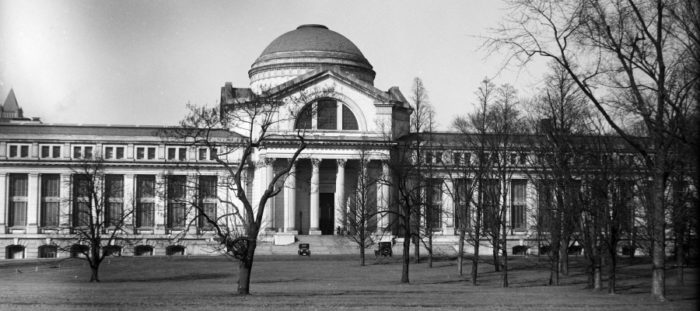
I began looking last week at the Robert Emmet statue that was to be unveiled and displayed at the “National Gallery of Art” – a single room within what is today the Smithsonian Natural History museum. In spite of it being finished and ready for unveiling, it took a couple of months to happen.
An article published in March 1917 stated that the statue was to be unveiled shortly after St. Patrick’s Day, but that day came and went with no sign of the statue, nor was any reason given for the delay.
The Washington Evening Star of June 19, 1917, in an article about the upcoming unveiling, added that the statue had been “cast at the Washington Navy Yard.” Six days later, in another article on the same subject, it added:
The statue, which is of heroic size, being about eight feet in height, is the first ever cast with District of Columbia sand. Sculptor Connor states that the sand for such work has heretofore been brought from abroad, but when the present emergency arose it was found that sand in the District proved just as suitable.
The Philadelphia Evening Ledger elaborated that the “statue has the further distinction of being all American…Sculptors heretofore have used French sand.” They also mentioned that it was much lighter than usual for statues of its size.

The location selected for it was the rotunda, in other words where the giant African elephant today stands. The “present emergency” the Star referred to was, of course the war that had been raging in Europe since 1914, which the United States had joined in two months earlier. And this may also explain both the delay in the unveiling and why Wilson was first to speak at the ceremony but chose not to: Ireland, in spite of having a large number of its young men fighting in the British army, was not uniformly in favor of the war, and some of Irish extraction in the United States openly rooted for Germany, in hopes that this would lead to Irish independence.
In spite of Wilson’s reticence, the unveiling was not without drama, as two suffragettes (or “Suffs” as some newspapers disparagingly called them) attempted to unfurl a banner stating “Mr. President, why be a liberal abroad and a conservative at home? Why laud past struggles for freedom and suppress the struggle for freedom at your gates.”
The two young women, Iris Calderhead and Elizabeth Stuyvesant (pictured above) were swiftly removed by Sarah V. Farling, a D.C. police officer.
For the next 30 years or so, the statue had pride of place in the Natural History museum, but eventually it must have become clear that it was very much out of place there and was placed into storage. In 1966, on the 50th anniversary of the Easter Uprising that led to Irish independence, it was placed at its present location, between the Irish and British embassies – though much closer to the former than the latter.
A recent article on the statue states that it was the first to be cast in the District of Columbia, which was obviously incorrect, given that Clark Mills cast the Jackson statue close to where it now stands in 1852. However, it was the first to be cast with local sand, giving it some local credibility. None of the articles state exactly where the sand used was dug up, however.
